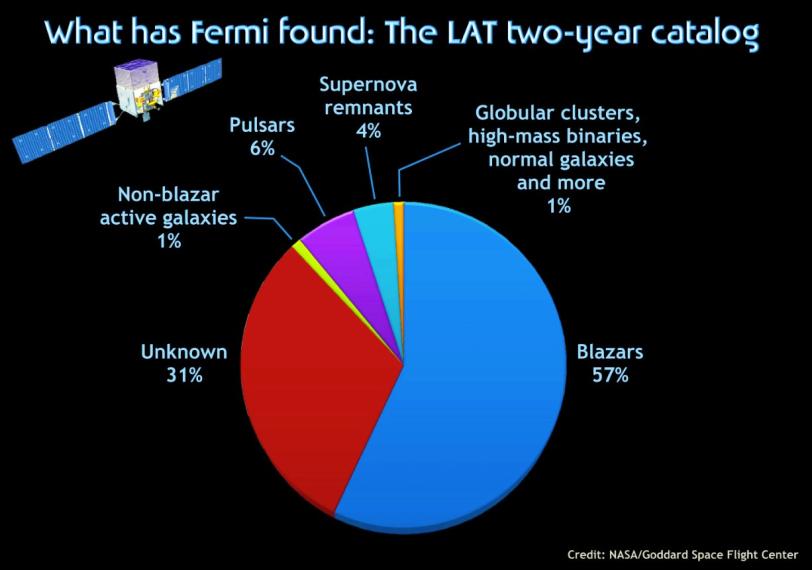Fermi's Latest Gamma-ray Census Highlights Cosmic Mysteries
Every three hours, NASA's Fermi Gamma-ray Space Telescope scans the entire sky and deepens its portrait of the high-energy universe.
By Francis Reddy, NASA/Goddard Space Flight Center
Every three hours, NASA's Fermi Gamma-ray Space Telescope scans the entire sky and deepens its portrait of the high-energy universe. Every year, the satellite's scientists reanalyze all of the data it has collected, exploiting updated analysis methods to tease out new sources. These relatively steady sources are in addition to the numerous transient events Fermi detects, such as gamma-ray bursts in the distant universe and flares from the sun.
Earlier this year, the Fermi team released its second catalog of sources detected by the satellite's Large Area Telescope (LAT), producing an inventory of 1,873 objects shining with the highest-energy form of light. "More than half of these sources are active galaxies, whose massive black holes are responsible for the gamma-ray emissions that the LAT detects," said Gino Tosti, an astrophysicist at the University of Perugia in Italy and currently a visiting scientist at SLAC National Accelerator Laboratory in Menlo Park, Calif.
One of the scientists who led the new compilation, Tosti today presented a paper on the catalog at a meeting of the American Astronomical Society's High Energy Astrophysics Division in Newport, R.I. "What is perhaps the most intriguing aspect of our new catalog is the large number of sources not associated with objects detected at any other wavelength," he noted.
Indeed, if the Fermi catalog were a recipe, the two major ingredients would be active galaxies and pure mystery. To them, add in a pinch of pulsars, a dollop of supernova remnants, and a dash of other celestial objects, such as globular star clusters and galaxies like our own Milky Way.
Astronomers delight in the possibility of finding new types of gamma-ray-emitting objects within the "unassociated sources" that constitute roughly a third of the catalog. But Fermi's LAT is revealing gamma-rays from an increasing – and sometimes, surprising – variety of astronomical objects. To highlight the range of LAT discoveries, the Fermi team created the following "top ten" list of five sources within the Milky Way and five beyond our galaxy.
